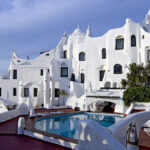When is the best time to visit Argentina?
Argentina is a captivating destination that offers a rich tapestry of experiences for every type of traveler. From the breathtaking landscapes of Patagonia to the bustling streets of Buenos Aires, the Argentina travel guide is filled with natural attractions, historical landmarks, and vibrant cultural experiences. The country’s diverse geography means you can explore the stunning Andes mountains, lush vineyards in Mendoza, and the iconic Iguazu Falls, making it a dream for outdoor enthusiasts and nature lovers alike.
The cultural scene in Argentina is equally impressive, with tango music and dance at the heart of its identity. Visitors can immerse themselves in the local culture by attending traditional festivals, sampling authentic Argentine cuisine, and exploring the country’s rich history through its museums and historical sites. The blend of European and indigenous influences shapes not only the architecture but also the culinary landscape, providing a feast for the senses.
When planning your trip, it’s essential to understand the seasonal variations in weather and tourist traffic. Argentina experiences four distinct seasons, with climates varying significantly across its regions. This makes it crucial to choose the right time to visit based on both climate preferences and local events. Whether you’re seeking the thrill of skiing in the Andes or the warmth of the northern provinces, Argentina has something special to offer year-round.
Tourist Seasons in Argentina
- Peak Seasons: The peak tourist seasons in Argentina are during the summer months (December to February) when local and international tourists flock to cities and attractions. Key holidays, such as Christmas and New Year’s, also draw large crowds.
- Mid Seasons: Spring (September to November) and fall (March to May) are considered mid-seasons, offering pleasant weather and fewer tourists, making it a great time for exploration.
- Valley Seasons: Winter (June to August) is typically the valley season in most regions, especially in southern areas like Patagonia. While ski enthusiasts may enjoy the slopes, overall tourist activity tends to decrease.
Weather Conditions & Seasonal Changes
Argentina’s climate is diverse, with significant variations across regions. Here’s a brief overview of the average temperatures and rainfall:
- Summer (December to February): Average highs of 30°C (86°F) in the north; cooler in the south.
- Fall (March to May): Mild temperatures averaging between 15-25°C (59-77°F) with moderate rainfall.
- Winter (June to August): Average lows can drop to 0°C (32°F) in the south; higher in the north.
- Spring (September to November): Pleasant weather with highs around 20-25°C (68-77°F) and blooming landscapes.
Special Festivities & Events
- Tango Festival: Held annually in Buenos Aires, showcasing the country’s iconic dance.
- Feria de Mataderos: A weekly market celebrating traditional Argentine culture with crafts and food.
- Carnaval: Celebrated in various regions with parades, music, and dance, usually in February.
- Malbec World Day: A celebration of Argentina’s famed wine, typically in April.
- National Flag Day: Celebrated on June 20, marking the significance of the national flag.



